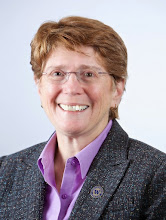I was just at the 12th Annual PILA auction. It was impressive, as always. Dedicated students pull off this complex and classy event, requiring countless hours of planning, organization, and detail work -- all while they are also carrying full courseloads (OK, so their schoolwork might suffer just a little in the weeks before the auction) and, variously, working part-time, serving on journals, or raising kids.
And then the event is great. It's the biggest event in the law school year that brings together people from many segments -- students, faculty, staff, alumni, community supporters. I enjoyed catching up with some alumni -- some now working in trial jobs they'd hoped for back when they were taking Trial Ad. Community supporters in attendance included William H. Gates Sr., Attorney General Rob McKenna (who spoke), Justice Bobbe Bridge, and Senator Ken Jacobsen. The law firm of Buck & Gordon stood out for its generosity.
The PILA auction is a happy event. People are in a good mood, visiting, shopping at the silent auction, eating, cheering each other on during the live auction -- all for the good cause of raising money to support students in summer jobs with public interest groups. That's good for the students, good for the groups, and good for the clients served!
For the last couple of years, PILA has been raising money for an endowment to start a Loan Repayment Assistance Program (LRAP). This is becoming more and more important as the cost of legal education rises -- and public interest and government salaries don't.
Equal Justice Works recently released Financing the Future: Responses to the Rising Debt of Law Students (2d ed. 2006) finding that law school debt
is harming the legal profession and our justice system. Public service is a calling for many law school graduates, but research on employment trends finds an alarming shortage of public sector and social justice jobs that provide a reasonable standard of living for those with educational debt, which now stands between many law school graduates and their desire to pursue public service careers.Press release, Dec. 18, 2006. Here are some stark numbers from the report (page iv):
Debt BurdenAs I recall, when I graduated from a private law school in 1982, I had about $13,000 in debt, and my first three jobs paid $24,000 (clerkship), $24,000 (government), and $18,500 (fellowship). I was not rolling in money, and my monthly loan payments definitely affected me -- but my total debt burden was just over half my annual salary, as opposed to today's grads whose debt is often TWICE their annual salary. The problem isn't just about grads who can't afford to work in their chosen fields. It's also about all the people who need the legal services that these grads could provide.Public Interest Salaries
- More than 80% of law students borrow to pay for their law degree.
- The average amount borrowed in law school by the class of 2005 was $78,763 at a private school and $51,056 at a public school.
- The median entry-level salary for an attorney from the class of 2005 at a civil legal services
organization was $36,000.- The median entry-level salary for public defenders was about $43,000.
State and local prosecuting attorneys started around $44,000.- The median entry-level salary was $40,000 for attorneys in public interest organizations, such as those dealing with immigrant or civil rights issues.
The good news in the report is that more LRAP programs are becoming available. About 100 law schools have them now. But this is just a start. PILA is doing its part to get an LRAP program here.
In the meantime, the Washington State Bar Association has an LRAP program, helping about five lawyers a year. And efforts are underway to get state legislation for a state-supported program.
Hats off to PILA -- keep up the good work!

No comments:
Post a Comment